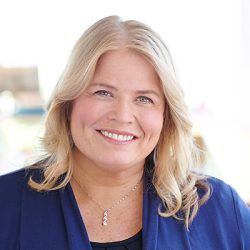
This is the second of a two-part blog on the issue of affordability in higher education. In the first installment, I shared a few panelist insights from a recent US News & World Report webinar about the changing notion of ed affordability, and the importance of helping students stay on course to graduate . In this second blog post, I share some of the panelists’ thoughts about on-campus vs. remote learning and the role technology plays for making higher education more affordable. The panelists that joined me for this webinar represented:
- California State University: one of the US’s largest and most diverse public universities
- Colgate University: a private liberal arts college in Madison County, New York
- The Institute for College Access and Success: an organization looking at college affordability from a public policy perspective
There were a few themes pertaining to curriculum preference and technology thatI wanted to share. If you are interested in the complete discussion, you can view it here.
On Campus vs. Remote vs. Hybrid Learning
When the pandemic hit, most schools had to re-think almost every aspect of how they operated. Cal State and Colgate both dealt with it effectively, but the end result was very different for each school.
Prior to the pandemic, Cal State had very low levels of online course work. “When the pandemic hit, we became the largest online university virtually overnight,” said Sylvia Alva, Executive Vice Chancellor for Academic and Student Affairs. “Using tech was only part of it though. We had to build skills with our faculty on how to engage students to achieve their learning goals.”
Alva believes there will continue to be greater demand for hybrid and online study, especially with more experienced students, and the school has made investments in online engagement a priority to meet that need.
Colgate also had to make a quick transition to online, but after working through the experience, they realized that the shared community experience on campus is a core part of the education they offer. As such, while there are still some hybrid learning elements, according to Tara Bubble, Dean of Admissions at the school, they are not making it a priority. “The student lifecycle matters at Colgate. They need close connections, to participate in things like research, athletics, and community service. We’ll continue to use hybrid and online tools as needed, but we didn’t want to identify as that.”
In a recent Flywire research study, we asked higher ed students from different countries about their preferences for in-person vs. hybrid vs. remote learning. Results varied by country, but more than half the students surveyed stated a preference for being back on campus for in-person learning. Every institution needs to make its own decision of course — as both Cal State and Colgate did — or be ready to support both scenarios.
Another aspect of the in-person vs. online discussion is education quality. Michele Streeter, Associate Director of Policy and Advocacy for The Institute for College Access and Success, wants to be sure that students aren’t losing out in the move to online learning. She acknowledges the challenges of moving curricula online, but also believes there need to be some baseline accountability measures to make sure all schools are working in the best interest of students.
Applying Tools and Technology to the Affordability Problem
A big part of our focus at Flywire, is to make it easier for both students around the world to securely pay their tuition, as well as for schools to seamlessly receive and reconcile those payments. That involves easing the experience and logistics of a payment - i.e., online access and flexible payment methods across different currencies. It also involves using proactive engagement and payment plan options to help keep students in school by reducing the amount they need to borrow, and minimizing their stress.
We deploy technology and automation to aid this process — giving schools the ability to engage with students proactively, understand their situation, flag changes in their circumstances, and sort out the best way to meet their affordability needs.
With schools needing to do a lot more with less these days, technology and automation are key to success. According to Alva, Cal State has had a lot of success with digital tools like chatbots and automated reminders to pay. And, most importantly, their students gravitate to and appreciate technology innovation.
Cal State also uses multilingual chatbots in their financial aid systems to free up staff members so they can spend more time on the higher touch personalization and support. Cal State is also looking at trends and patterns in their student data to better understand when and where to intervene. In Alva’s words, “to know our students so we know where to act.”
The education affordability problem is something that impacts our entire society. It’s a challenge we have to address and one that will require all perspectives – students, schools, public policy, and technology – to solve.
Want to learn more?
If you want to see why Flywire is the Trusted Choice of millions of students, thousands of institutions and hundreds of education agents around the world, check out the following resources:
- Access our global payments study to uncover additional higher education trends
- Explore our interactive maps to see how students and institutions experience the difference with Flywire
- Discover how our Comprehensive Receivables Solution simplifies the payment process
- See how Payment Plans help make education costs more manageable for students and families worldwide
- Check out how Flywire's collections management software helps institutions keep more students enrolled
